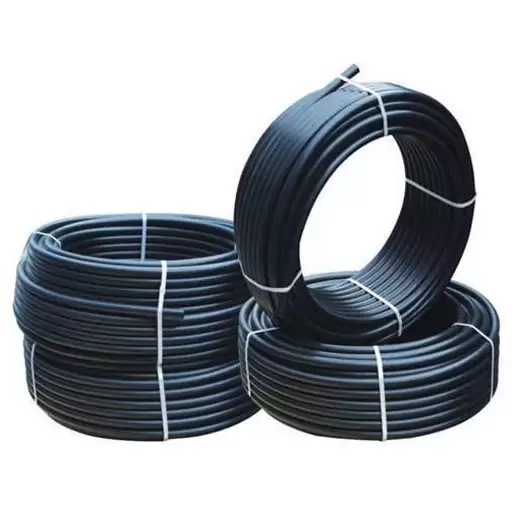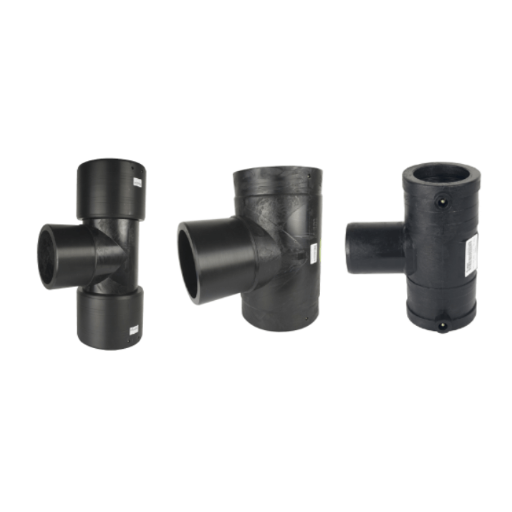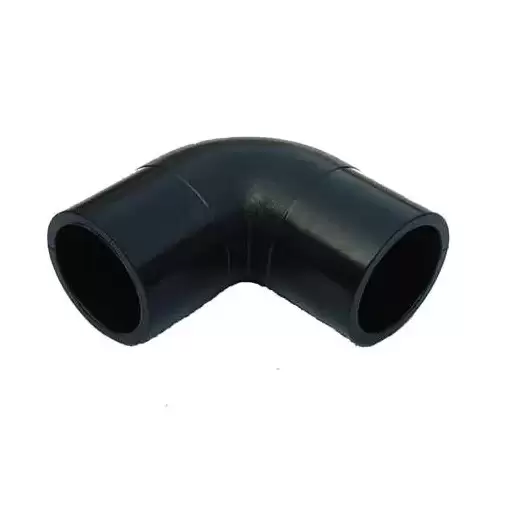High-Density Polyethylene (HDPE) pipes have revolutionized industries with their combination of strength, flexibility, and longevity. Among these, corrugated HDPE pipes stand out as a go-to solution for infrastructure, drainage, and environmental projects worldwide. But what makes these pipes so popular? This article dives into the core documentation, essential specifications, and undeniable benefits of corrugated HDPE pipes. Whether you’re a contractor, engineer, or simply curious about the technology shaping modern piping solutions, this guide will provide insights into why corrugated HDPE pipes have become a trusted choice in a variety of applications.
Product Details of Corrugated HDPE Pipe

Overview of HDPE Material
Being a highly dense type of polyethylene, HDPE is very durable and versatile and finds application in various industries. Being renowned for its strength-to-density ratio, the material can resist impact, corrosion, and weathering. These traits make it suitable for high-end applications, especially piping. HDPE, being light yet tough, can guarantee easy handling and installation while not compromising its integrity.
HDPE has been recognized for its excellent resistance to chemicals and abrasions and is usually used for conveying water, sewage, and other liquids where environmental conditions are harsh. Furthermore, the material is harmless to health and environmentally friendly, hence recyclable in most situations, and can thus help with sustainability. Its ability to bend or grow without breaking under pressure gives HDPE an advantage, particularly in situations with ground movements or heavy external loads.
Moreover, HDPE pipes are best known for their long service life and lowest cost; therefore, in ideal installations and usages, HDPE products would not need replacement for decades, so as to incur so much maintenance cost. Cementing their position as a good choice in building modern piping systems are other benefits apart from adaptability to many environmental and industrial implementations.
Advantages of Corrugated Design
Corrugated designs offer a multitude of advantages that make them ideally suited for piping systems, especially under demanding circumstances. Some of the five key advantages one has when dealing with corrugated piping are:
- High Structural Strength: A corrugated profile provides more structural strength to the pipe in question so that it may oppose heavy loads and displacement from the ground. Thus, it is the best kind for the work of road crossing and deep burial installation. For instance, corrugated HDPE pipes may take on loads of up to 80 kN/m^2 under certain situations.
- Lightweight and Easy Installation: In the case of corrugated pipes, the weight is much less when compared to traditional types of pipes, and this can be a major advantage in transportation and installation, eventually saving cost and labor. Studies reveal that the installation of corrugated pipes is as much as 30% quicker when compared to the non-corrugated type.
- Superior Flexibility: The corrugated shape affords flexibility, which enables the pipes to adjust without breakage to shifts or settlement of the ground. This feature will be especially appreciated in regions of seismic activity or hilly places.
- Better drainage flow: The corrugation permits higher flow rates by reducing surface tension and maximizing the conveyance of water. Hydraulic tests showed that corrugated pipes could increase flow efficiency by up to 20% from that of smooth-walled pipes.
- Cost-Effectiveness and Longevity: Corrugated designs reduce not only the amount of material requirements for construction but also increase the service life. For instance, excellently made corrugated HDPE pipes have a service life between fifty and sixty years in normal soil conditions, thus proving an excellent value for money in the longer run.
These attributes make corrugated pipes an outstanding choice for a wide range of infrastructure and industrial applications.
Applications of Corrugated HDPE Pipe
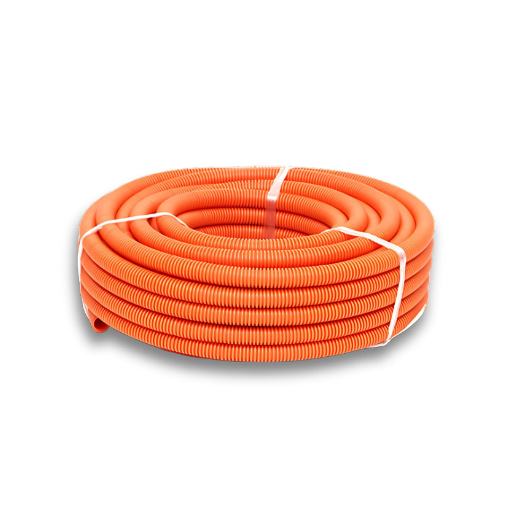
Drainage Systems and Their Efficiency
Due to higher durability and lower base cost, Corrugated HDPE Pipes have taken over modern drainage systems. The pipes are designed using the corrugated structure, which yields more strength with comparatively lesser weight. Hence, it is less cumbersome to transport these pipes for installation, even in difficult areas. Furthermore, these pipes resist corrosion along with abrasions, and chemicals for a better life. These characteristics thus reduce maintenance considerably while increasing the overall efficiency of the drainage systems and, hence, are preferred in both urban and rural infrastructures.
An important factor that optimizes the efficiency of corrugated HDPE drainage systems is their hydraulic capacity. The smooth inner surface of these pipes decreases friction, allowing water to flow freely without hindrance. This is particularly important in regions subject to heavy rainfall or flooding, where immediate water handling is essential. Studies indicate that systems including corrugated HDPE pipes comparatively handle more flow rates, resulting in almost 30 percent more efficiency in HDPE systems. They are further adaptable in construction as they can resist extreme temperatures and low temperatures alike.
The uses of corrugated HDPE drainage systems spread from highway drainage to agricultural irrigation and stormwater management. For example, in an urban setting, these pipes are almost continuously being laid for efficient management of stormwater runoff in order to prevent damage to infrastructure and aid public safety. Meanwhile, those in the agricultural domain use these drainage systems to control water levels to ensure optimal soil moisture for their crops. Moreover, with better manufacturing techniques, it is now possible to customize HDPE pipes for special project needs, guaranteeing them for a wider range of applications and reduced ecological impact. All these characteristics, put together with the longevity of corrugated HDPE pipes, make them a building block for sustainable infrastructure development.
Agricultural Irrigation Solutions
Agricultural irrigation is critical in areas where an inconsistent rainfall pattern impedes the growth of crops. By means of advanced irrigation systems like drip sprinklers, small ranchers may be able to water their fields without any water wastage and an increased productivity. Low-grade material creates a drawback in irrigation works, whereas excellent-grade materials, mainly HDPE pipes, become crucial in ensuring durability in operation. HDPE pipes provide a good irrigation environment for water conveyance throughout huge agricultural lands while retaining little contamination.
Advanced irrigation techniques have brought changes to agricultural water management practices. For example, smart irrigation systems use IoT devices along with soil moisture sensors to calculate the optimal amount of water to use from current conditions. These systems then allow agriculturalists to deliver timely water so that their crops get sufficient water in time. The advantage of this data-controlled irrigation is that it really cuts down on water wastage while ensuring that a considerable enhancement in the quality of crops is attained.
Agricultural research data champions the fact that farmers with efficient irrigation systems complemented by environmentally friendly materials such as corrugated HDPE pipes exhibit water savings between 20 and 40% over conventional methods. The use of an eco-friendly infrastructure brings these farming methods in line with the current global objectives for sustainable development in the agricultural sector. Farming invests in irrigation technology; hence, farmers improve their production prowess while taking care of valuable water resources for posterity.
Installation of Corrugated HDPE Pipe
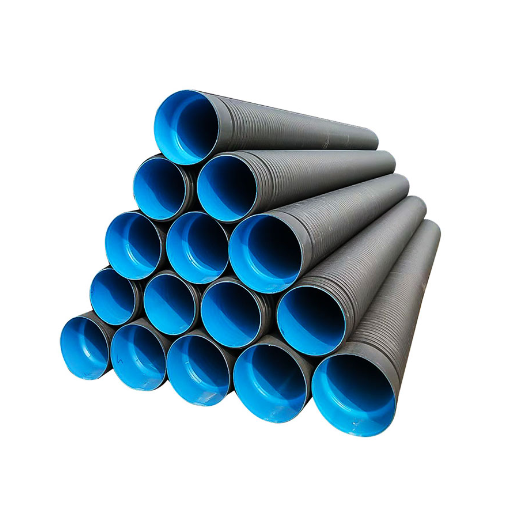
Step-by-Step Installation Guide
- Preparation of Site and Assessment: Site inspection needs to be performed to assess soil conditions, the grading, and elevations that must be met. Keep the installation free from obstructions and debris so that it will provide an easy working environment.
- Trench Excavation: Excavate the trench sufficiently wide for the pipe diameter so that there is sufficient space for backfilling. The trench depth would thus be the depth required for setting the pipe to the specified grade of water flow. A firm and stable trench floor is the most important factor for helping the pipe maintain itself.
- Creating a Stable Bedding: A layer of granular material (typically sand or crushed stone) is placed and leveled in the bottom of the trench. This bedding layer is usually 4 to 6 inches thick. It supports the pipe uniformly and absorbs any minor ground movements.
- Pipe Laying: Place the corrugated HDPE pipe in the trench, making sure that the pipe is aligned correctly to the direction of water flow. At longer pipeline installations, all joints provided for with couplings or joint connections as specified shall be made tight to prevent leakage.
- Initial Backfilling: Backfill up to 12 inches above the pipe with suitable material, thoroughly compacted in layers to support the pipe and prevent its displacement. Do not allow heavy machinery onto the pipe while backfilling.
- Final Backfilling and Compaction: Backfill to the surface with excavated soil or fill material, compacting in layers. The final grade shall conform to the plans or tie in to adjoining ground contours.
- Inspection and Maintenance Planning: Ensure that installations are inspected for proper alignment, visible defects, or irregularities. Establish a maintenance plan to periodically clear debris and inspect water flow to maintain long-standing operation.
By sticking to the described installation process, projects involving corrugated HDPE pipes will have solid and long-lasting drainage systems that take care of water management and reduction of environmental pollution on a large scale.
Best Practices for Longevity
To maximize the lifespan of corrugated HDPE pipes, it must be ensured that major best practices are strictly adhered to. For example, bedding and backfilling must be done properly to support the pipe as well as to reduce external loads that could cause deformation. The selected backfill should be free of fines and clean graded aggregate so as to avoid crushing and settling.
Regular inspection and maintenance may address problem areas in time, such as blockages caused by sediment deposition or damage due to external forces. Maintenance would be further enhanced by the use of cutting-edge technology with remote sensors providing real-time data on water flow and the state of the pipes.
Moreover, there must be a very good jointing system to minimize leaks and the ingress of contaminants in systems where water quality is significant for larger infrastructures. Finally, training for installation teams on the latest standards, and employing qualified professionals, will avoid mistakes that lead to compromising the durability of the system. Together, all these measures guarantee the faithful performance and longevity of corrugated HDPE pipe systems.
Common Installation Mistakes to Avoid
Mistakes are common in the installation of corrugated HDPE pipe systems that compromise the performance in any way and the durability of the system. Improper trench preparation is a major mistake. If the trench is not deep enough or wide enough, the bedding support will be very poor, and this will cause deflection of the pipe under load or might even lead to its collapse. Backfilling without proper compaction is another common problem. If not well compacted, voids will be created around the pipe, resulting in an uneven pressure distribution and possible collapse.
Disregarding the manufacturer’s specifications about jointing methods will lead to leakage or misalignment that will, in turn, compromise efficiency. Another common mistake is gradients being misjudged during the installation of drainage systems, which causes the water to sometimes pool and at other times flow too slowly. Lastly, not inspecting or clearing debris during the installation from within the pipe will incapacitate water flow.
Following the industry standards, reviewing the updated installation guidelines, and carrying out regular checks on the system are pertinent for avoiding these errors and for ensuring that the corrugated HDPE pipe system can thrive in the long run.
Durability and Performance
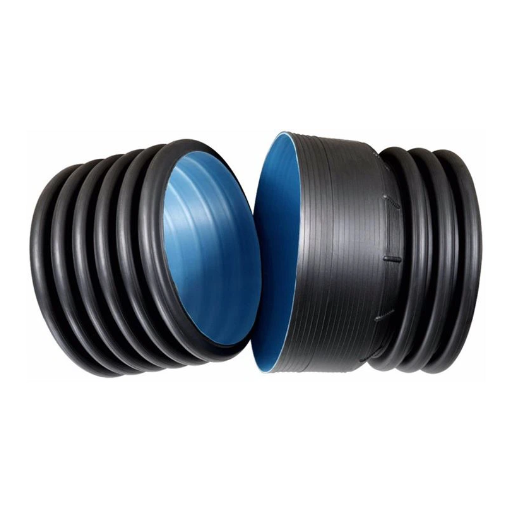
Resistance to Corrosion and Environmental Conditions
Corrugated HDPE pipes enjoy an excellent reputation due to their corrosion resistance and thus find some uses across a varied spectrum. Unlike conventional materials like concrete or steel, HDPE, meaning High-Density Polyethylene, will not rust or deteriorate when subjected to the effects of moisture, chemicals, or salts found commonly in soil and water. Essentially, the corrosion resistance of this material guarantees long life, especially in corrosive environments such as the seaside or industrial zones where pipes are subjected to harsh operating conditions. Moreover, since HDPE is generally inert and does not get affected by the majority of chemicals, it can be used in all standard applications, including those involving aggressive chemicals.
And so, HDPE pipes offer far better performance when faced with harsh environmental conditions. The flexibility and strength of these pipes ensure that they maintain their structural integrity through temperature variations, from extreme cold to high heat. They have a unique molecular structure that allows the pipes to expand or contract, to a minimum, thereby eliminating any kind of crack or deformation that can take place over time. This is thermally crucial for the drainage or stormwater system applications, which remain exposed to conditions from time to time.
Next is HDPE’s resistance to ultraviolet rays, making it favorable for outdoor work requiring extended exposure to sunlight. Special grades are also developed by incorporating UV stabilizers to further enhance the performance and safeguard the material from degradation caused by extended exposure to ultraviolet radiation. A synergy of qualities creates a system that assures long-term value and reliable service across areas of industry while simultaneously resisting degradation and requiring minimal maintenance.
Load Bearing Capabilities
Today, modern polymers and composites characterize superior load-bearing capacity. These materials are designed to bear very high stresses and strains while maintaining a structure that supports the weight. Material innovations have shaped high-strength polymers and reinforced fiber composites that are durable and lightweight. This interplay of properties and merits makes them applications in construction, automotive, and aerospace industries, where the topmost priority is keeping the weight down while maintaining strength.
The reinforcing elements must have their load-bearing capacity enhanced by these materials. The glass fiber reinforcement distributes the load into the matrix and hence best optimizes structural strength while minimizing the hazards of failures under pressure. Carbon fiber composites have excellent tensile strength and stiffness, and so can bear dynamic and static loads for short to long periods. Engineers and designers also utilize computational modeling to solve stress distribution and optimize the material composition for a defined load-bearing application.
Production techniques have evolved in tandem with new and emerging ideas such as 3D printing and new developments in molding screw. This ensures that designs are tailor-made to sustain their unique loads, with accuracy and customization leading to optimized material use and the least wastage possible. Predictive maintenance also helps to retain load-bearing materials for performance during their lifetime by giving signals of early degradation or wear. It is a combination of all these advanced material properties, combined with the manufacturing method and monitoring techniques, which guarantee the reliability and performance of today’s load-bearing systems in normal and extreme uses.
Comparison with Other Piping Materials
These corrugated HDPE pipes, therefore, stand a comparison against PVC, concrete, metal, and other conventional materials, in terms of cost, durability, flexibility, ease of installation, and environmental concerns.
|
Feature |
HDPE |
PVC |
Concrete |
Metal |
|---|---|---|---|---|
|
Price |
Moderate |
Low |
High |
High |
|
Strength |
High |
Moderate |
Very High |
High |
|
Flexibility |
Excellent |
Limited |
None |
Limited |
|
Rustproof |
Yes |
Yes |
No |
No |
|
Weight |
Light |
Light |
Heavy |
Heavy |
|
Setup |
Simple |
Simple |
Complex |
Complex |
|
Green |
Yes |
Partially |
No |
No |
|
Longevity |
Long |
Moderate |
Very Long |
Long |
Industry Perspectives and Innovations

Sustainable Practices in Pipe Manufacturing
Improving sustainability in pipe manufacturing is increasingly becoming a priority for our environment and in reducing the carbon footprint. One major way would be to use recycled materials, such as metals and plastics that have been repurposed, to avoid wasting the material and the resources required to exploit them. Further enhancement of manufacturing methods, including laser welding and extruding processes, has achieved improved efficiency in material usage and energy usage.
A further significant solution also involves the use of environmentally friendly coatings and treatments that act to improve the durability of pipes without adversely affecting ecosystems with toxic chemicals. Water-based coatings and biodegradable materials are entering the scene more and more, where they provide the required protection while supporting environmental goals.
Also, manufacturers are gradually obtaining renewable power as their major power source, for example, through the use of solar and wind energy. This brings down the dependence on fossil fuels, thus further abating the emissions generated from manufacturing.
Innovative designs also strongly contribute to sustainability. Engineers have worked to manufacture materials that are lighter yet stronger and utilize fewer raw ingredients than traditional materials with equal or superior performance. These ameliorations also imply less transportation energy due to their light weight. Hence, in unison with resource efficiency and environmentally aware technologies, the industry is progressively shaping itself into a world where environmental consciousness is just incorporated into everyday life.
Emerging Technologies in HDPE Pipe Production
Emerging technologies in High-Density Polyethylene (HDPE) pipe production target efficiency, durability, and low environmental impact. One such cutting-edge technology is the automation of extrusion systems, enabling a high level of control over pipe dimensions, as well as material properties. This operation minimizes errors during production, along with minimizing any wastage of the raw material, thereby producing a product of very high quality every time.
Smart monitoring systems are also highly emphasized throughout development. Equipped with IoT-enabled sensors, manufacturers gather real-time data for temperature, pressure, and material flow to improve quality management and get ahead of maintenance requirements to prevent downtime.
From a further polymer perspective, newer grades of HDPE resins are evolving for stronger and longer applications. Most of these newer materials offer improved resistance to environmental stress cracking and ultraviolet degradation, providing them with the ability to be implemented in unfavorable environmental conditions for long periods.
3D printing is also becoming a very minor complementary technology in HDPE work. While still at the experimental stage currently, it has immense promise for custom fittings or components necessitating unique geometries to fulfill very particular project demands with material efficiency. Together, these will thus determine the future landscape of HDPE pipe production, establishing cost and environmentally friendly solutions for industries worldwide.
References
Frequently Asked Questions (FAQ)
Q: What is a corrugated HDPE pipe?
A: A corrugated HDPE pipe is a high-density polyethylene pipe characterized by its corrugated structure, which enhances flexibility and strength. It is commonly used in drainage applications, including stormwater management, sewer systems, and agricultural drainage.
Q: What are the advantages of using corrugated HDPE pipes?
A: Corrugated HDPE pipes provide superior durability and flexibility compared to traditional drainage pipes. They are lightweight, resistant to corrosion, and can withstand heavy traffic loads. Additionally, they feature watertight joints and smooth interiors, promoting efficient gravity flow.
Q: How is the installation of corrugated HDPE pipe performed?
A: The installation of corrugated HDPE pipe involves careful planning according to project specifications. It typically includes trench excavation, laying the pipe with proper alignment, and ensuring watertight joints as per ASTM and AASHTO standards. A manual is often provided to guide the installation process.
Q: What specifications should be considered for HDPE drainage pipes?
A: When selecting HDPE drainage pipes, it is essential to consider specifications such as ASTM F2306, AASHTO M252, and AASHTO M294. These specifications ensure that the pipe meets performance requirements for durability, hydraulics, and structural integrity.
Q: What types of drainage applications are suitable for corrugated HDPE pipes?
A: Corrugated HDPE pipes are suitable for various drainage applications, including municipal storm drainage, agricultural drainage, sewer systems, and infrastructure projects. Their design allows for effective infiltration and management of water flow.
Q: Can corrugated HDPE pipes be used for culverts?
A: Yes, corrugated HDPE pipes are commonly used in culvert applications due to their lightweight nature and ability to handle heavy loads. They are manufactured by AASHTO standards, making them reliable for transportation projects.
Q: What is the difference between perforated and non-perforated HDPE pipes?
A: Perforated HDPE pipes have holes or slots along their length to allow water infiltration, making them ideal for drainage applications where water needs to be collected. Non-perforated HDPE pipes, on the other hand, are designed to transport water without allowing it to seep out.
Q: How do I ensure the reliability of my drainage system with HDPE pipes?
A: To ensure the reliability of a drainage system using HDPE pipes, it is crucial to adhere to proper installation techniques, select the right pipe diameter and specifications, and regularly inspect the system for any blockages or damages. Utilizing products that comply with ASTM and AASHTO standards further enhances performance.
Q: What are the common applications for corrugated pipes?
A: Common applications for corrugated pipes include stormwater management, agricultural drainage, road and highway construction, and landscape drainage. Their versatility makes them suitable for various infrastructure projects that require effective water management.




